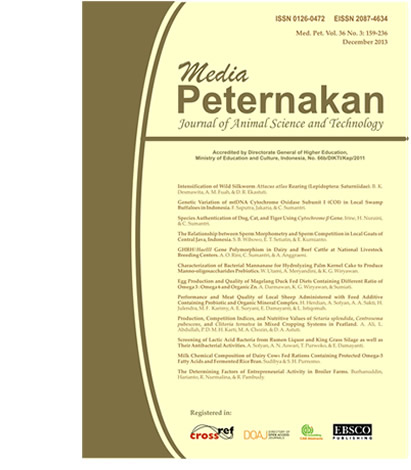Genetic Variation of mtDNA Cytochrome Oxidase Subunit I (COI) in Local Swamp Buffaloes in Indonesia
DOI:
https://doi.org/10.5398/medpet.2013.36.3.165Keywords:
COI, filogeny, genetic variation, Indonesian buffaloesAbstract
The objective of this research was to identify genetic variation of mitochondria DNA especially in cytochrome oxidase subunit I (COI) among population of Indonesian buffaloes. Samples of swamp buffaloes were collected from Aceh (n= 3), North Sumatra (n= 3), Riau (n= 3), Banten (n= 3), Central Java (n= 3), West Nusa Tenggara (n= 3) and South Sulawesi (n= 3), and riverine buffalo from North Sumatra (n= 1) out of group for comparison. Sequence of COI was analyzed using MEGA 5.10 software with neighbor-joining method kimura 2-parameter model to reconstruct phylogeny tree. The result showed that three haplotypes for swamp buffalo and one haplotype for riverine buffalo in Indonesia resulted from 41 polymorphic sites. This finding showed that the COI gene could be considered as a marker to distinguish among swamp buffaloes in Indonesia.



